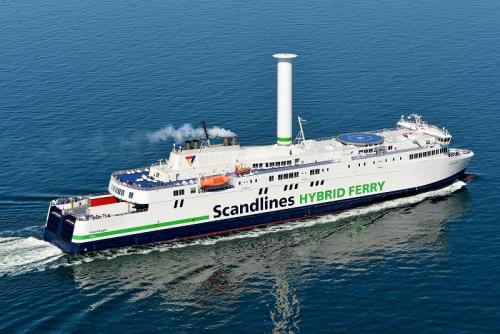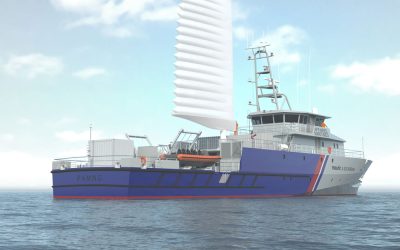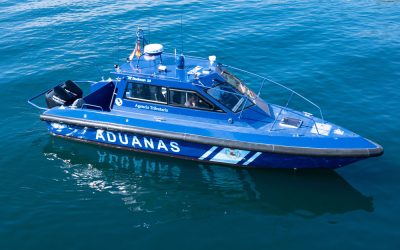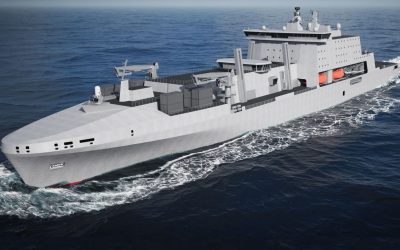As the shipping industry journeys towards IMO’s 2050 decarbonisation targets, much of the focus is on future fuels. But mounting pressure for a rapid reduction in carbon emissions and the imminent implementation of new energy-efficiency standards are driving a growing interest in solutions available today that can help make vessels cleaner and greener in the near-term, one of which is wind-assisted propulsion.
“The momentum in wind propulsion is continuing to grow and there are the early signs that investment, installations and production lines are starting to ramp up,” says Gavin Allwright, secretary-general of the International Windship Association (IWSA). “There is significant interest in these technologies to deliver benefits when it comes to EEDI/EEXI calculations and as a clear and increasingly affordable part of the solution for CII.”
Recognising the importance of wind propulsion technology in the push to decarbonise, IMO has granted IWSA full consultative status. However, Allwright believes there is still a perception gap when it comes to the uptake of wind propulsion. “Currently, we have more large commercial vessels in operation using wind propulsion systems than all zero-emission fuel options combined,” he explains. Allwright expects to see a doubling of installations on large vessels by the end of 2022.
Kite takes to the skies
Kites, rotors and rigid sails are amongst the wind-powered solutions, and the start of 2022 has seen a burst of activity in this emerging sector. Following formal approval from Bureau Veritas to begin operations at sea, France-based Airseas’ automated kite Seawing has embarked on its first transatlantic voyage. The parafoil, which can be deployed, operated and stored at the push of a button, flies at an altitude of around 300m, capturing the strength of the wind to propel the vessel. The system has been installed on the ro-ro ship Ville de Bordeaux, which will deploy a half-size 500m2 Seawing on its journeys transporting aircraft components between France and the US, conducting six months of sea trials and testing. Airseas estimates that the system will enable an average 20% reduction in fuel consumption and greenhouse gas (GHG) emissions.
Rotor sail recognition
Italian classification society RINa has granted Finland’s Norsepower Approval in Principle (AiP) for its rotor sail technology solution. The sail is a modernised version of the Flettner rotor – a spinning cylinder that uses the Magnus effect to harness wind energy to propel a ship, allowing the main engine to be throttled back to improve fuel efficiency and to obtain a reduction of GHG emissions. According to Norsepower, the current savings that can be achieved with rotor sail installation range between 5-25%.
The technology will be installed on Scandlines’ hybrid ferry M/V Berlin later this year, following its successful installation on sister ferry M/V Copenhagen in 2020 (pictured), and a year of demonstrated results. “We expected the M/V Copenhagen rotor sail to provide a 4 to 5% CO2 reduction. That expectation has been met, so we have now taken the next step and prepared the M/V Berlin for installation,” says Scandlines’ COO, Michael Guldmann Petersen. Preparation included building a steel foundation on the ferry, on which the rotor sail will be fixed.
Hard sail system ready
Mitsui OSK Lines (MOL) and Oshima Shipbuilding in Japan have announced the completion of a hard sail system jointly developed under the ‘Wind Challenger’ project. MOL estimates the additional propulsion power will reduce a vessel’s GHG emissions by 5-8%. The system will be installed on a bulk carrier currently under construction at Oshima Shipbuilding and slated for delivery in this autumn.
Also starting the year with the wind in its sails is Michelin’s WISAMO project, which is centred on an automated, telescopic, inflatable wing sail system. The French tire maker has partnered with Compagnie Maritime Nantaise to test the system on a merchant ship for the first time – a prototype with a surface area of 100m2 is to be installed on Compagnie Maritime Nantaise’s ro-ro cargo vessel MN Pélican in the second half of 2022. Chartered by Brittany Ferries, the ship makes two weekly rotations between Poole in the UK and Bilbao in Spain and Michelin says WISAMO could help save up to 20% in fuel consumption.
“As we enter the crucial 2022/23 period, wind propulsion may not be making as many waves as alternative fuels, but the outlook is bright with a stiffening breeze,” says Allwright.




